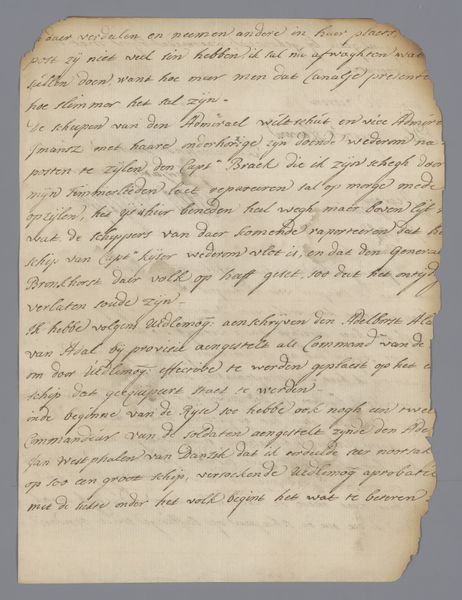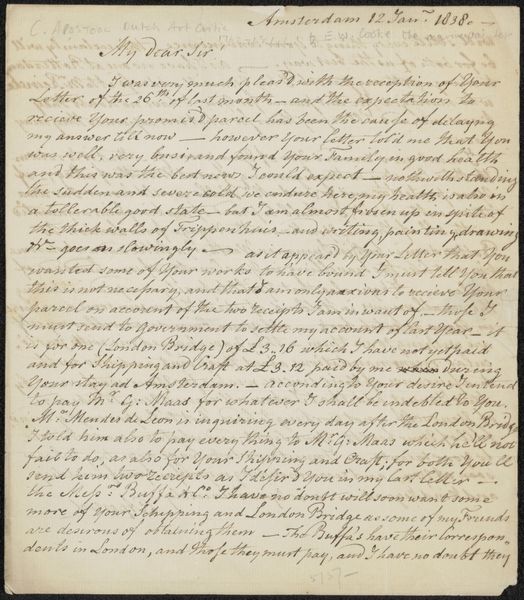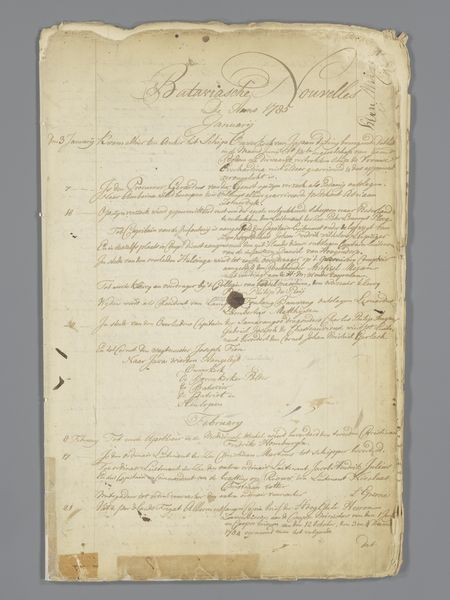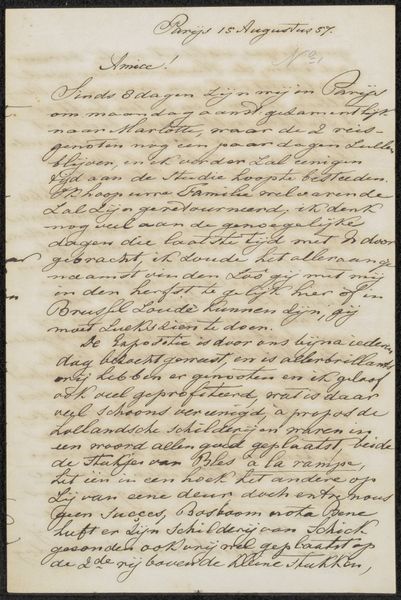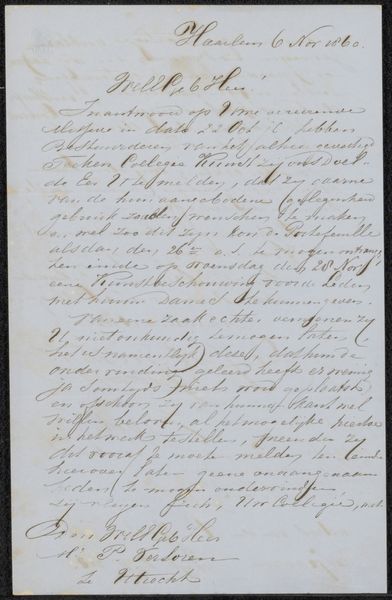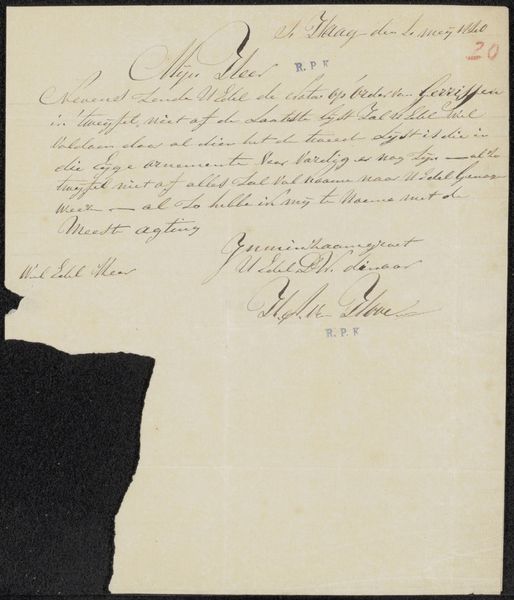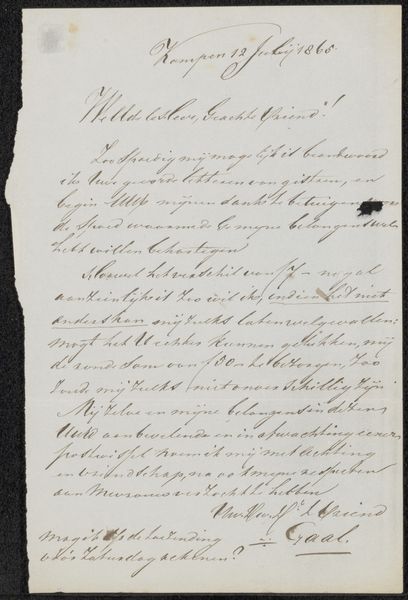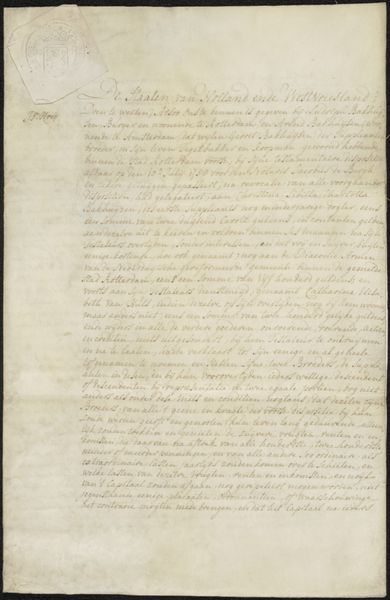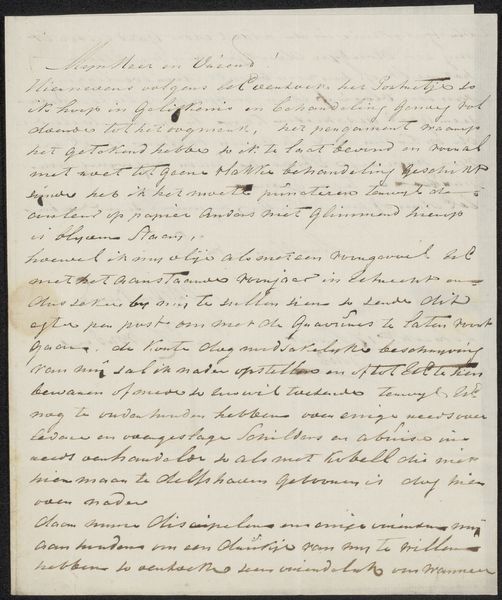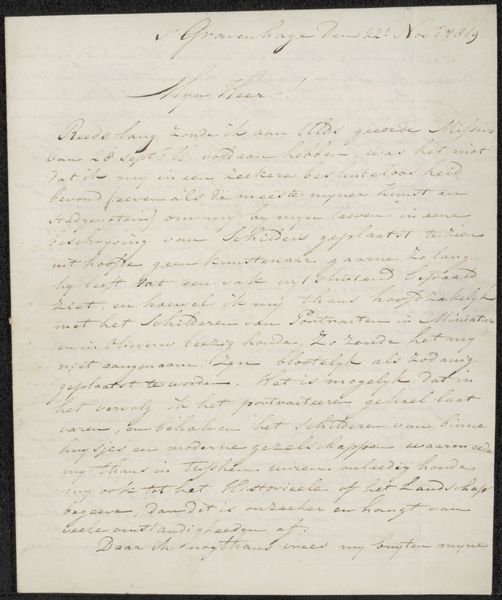
paper, ink
#
portrait
#
hand written
#
hand-lettering
#
lettering
#
hand lettering
#
paper
#
ink
#
united-states
#
history-painting
#
realism
#
calligraphy
Dimensions: 12 1/2 x 7 3/4 in. (31.8 x 19.7 cm)
Copyright: Public Domain
Curator: We're looking at Samuel Verplanck's "Will," created in 1793. It's an ink on paper document housed right here at the Metropolitan Museum of Art. Editor: Immediately, the elegant, looping script just draws me in. It feels so incredibly intimate, you know? It's a will, a man’s final words about his possessions, loved ones… it’s poignant, right off the bat. Curator: Absolutely. This document provides fascinating insight into the social and legal structures of late 18th-century America. Wills weren't just about property; they reflected societal expectations, family dynamics, and even religious obligations. Notice the formal language; it speaks to the legal conventions of the time. Editor: Yeah, it's also striking how different the language is from what we'd use today. All those "I bequeaths..." It really gives you a sense of the era. But also makes me wonder about Verplanck himself. What was his life like? What did he value? Curator: Samuel Verplanck was a prominent figure in New York society. Studying this document lets us trace land ownership, charitable giving, and family ties, revealing a web of relationships and influences within his community. Editor: I keep going back to the hand. There’s this feeling of this guy putting pen to paper and the significance of this task…his literal signature securing its place. I imagine him deliberately making each stroke. It’s…human. Vulnerable, almost. Curator: Precisely. Wills like this served a very public function – declaring one’s wishes and solidifying social order. The witnesses named at the bottom further legitimized the document in the eyes of the law and the community. Editor: And each name written there, probably holding their breaths, right? Maybe they shared a glance or some unspoken word. To look into something like that, across so much time…it gives me chills. Curator: Thinking about this artwork as an artifact reveals legal norms from a society on the brink of immense transformation, a new nation establishing itself. It also gives us a peek at its intimate, familial sphere. Editor: Seeing history in such a direct and immediate way, you start thinking about what you would do, or have. What lasts and what really matters? Curator: Indeed. A historical lens can allow you to appreciate these material traces of a life and culture vastly different than our own.
Comments
No comments
Be the first to comment and join the conversation on the ultimate creative platform.
